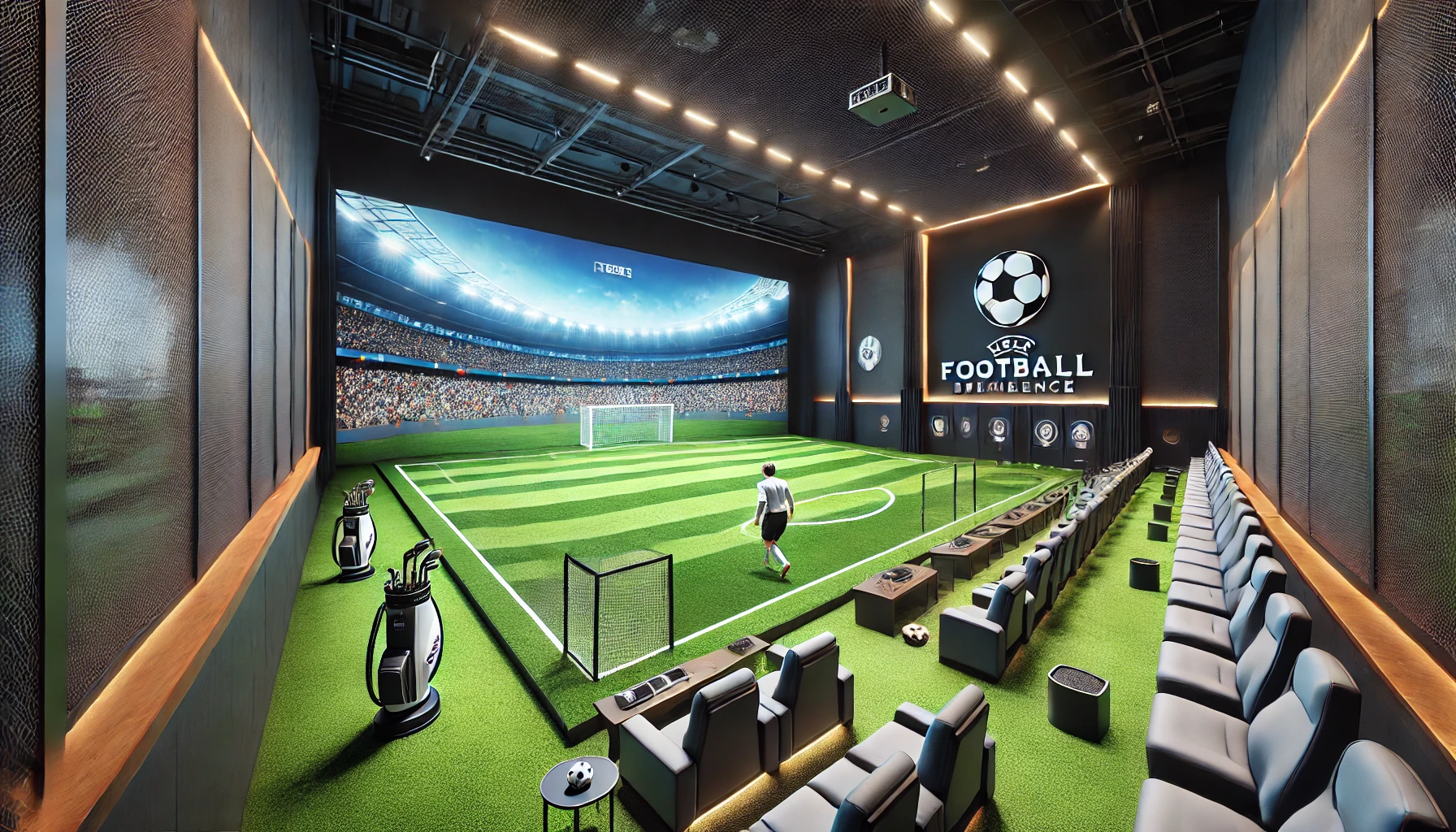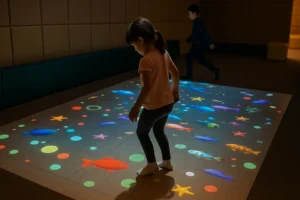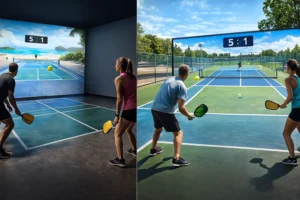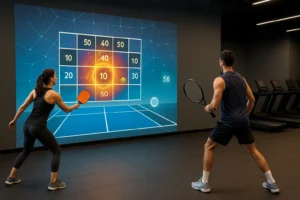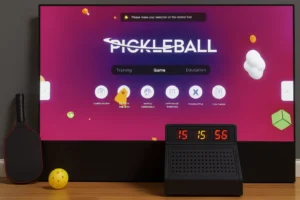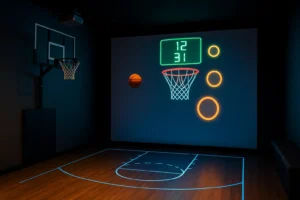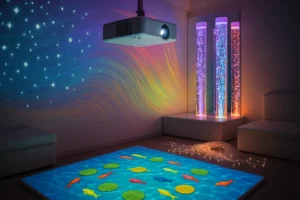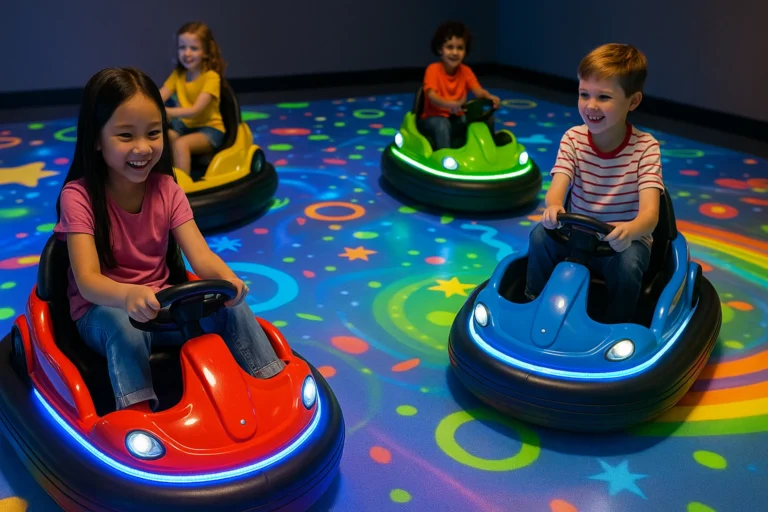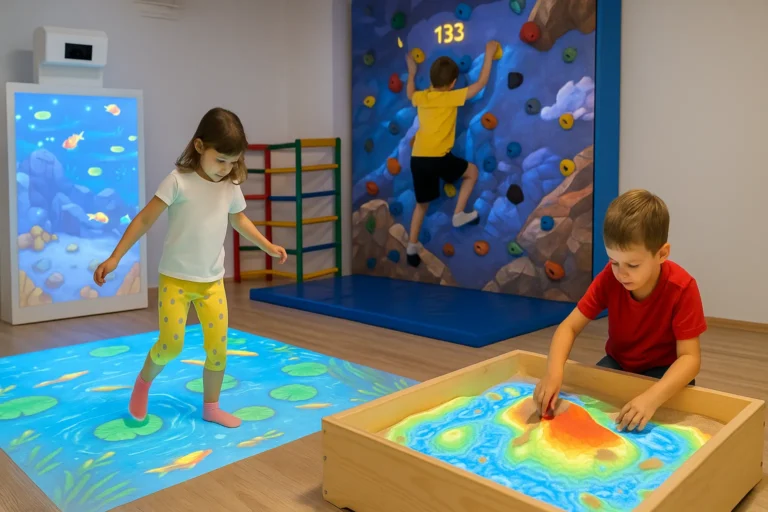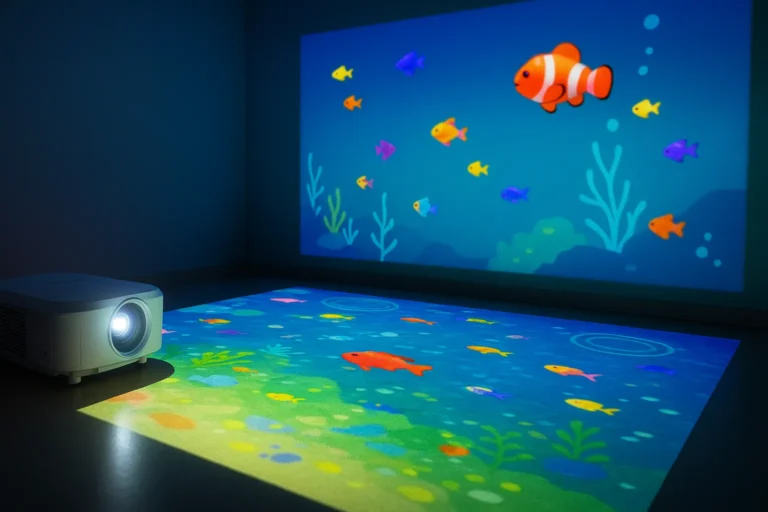As technology advances, the ways we train and play sports evolve. One of the latest innovations is the indoor augmented reality live football simulation game, which offers a realistic and interactive goal scoring experience. This technology combines the physical aspects of football with digital enhancements to create an immersive training environment.
Understanding Indoor Augmented Reality Football Training Scoring Games
Indoor AR football training scoring games use augmented reality to enhance traditional football training. By projecting digital elements onto a physical space, these systems provide real-time feedback and interactive challenges that can improve players’ skills and engagement.
Key Features:
- Real-Time Feedback: Immediate analysis and feedback on performance.
- Interactive Challenges: Customizable training drills and scoring challenges.
- Immersive Environment: Combines physical play with digital projections for a more engaging experience.
Benefits:
- Improved Skills: Enhances various football skills through targeted drills.
- Engagement: Keeps players motivated with fun and interactive elements.
- Convenience: Allows for effective training indoors, regardless of weather conditions.
By incorporating these features, AR football training systems can significantly enhance the traditional training experience.
The Role of Interactive Football Projection Mapping Games
Projection mapping games are a core component of indoor AR football systems. These games use projectors to display interactive graphics on surfaces like walls and floors, creating a dynamic training environment.
How Projection Mapping Works:
- Projectors: High-quality projectors display graphics and animations on the training area.
- Motion Sensors: Track players’ movements and interactions with the projected elements.
- Software: Manages the projections and integrates real-time feedback and interactive elements.
Popular Projection Mapping Games:
- Goal Scoring Challenges: Players aim to score goals in specific target areas.
- Dribbling Drills: Interactive paths and obstacles to improve dribbling skills.
- Reaction Tests: Quick response challenges to enhance reflexes and decision-making.
By integrating projection mapping games, you can create a versatile and engaging training environment that caters to various aspects of football training.
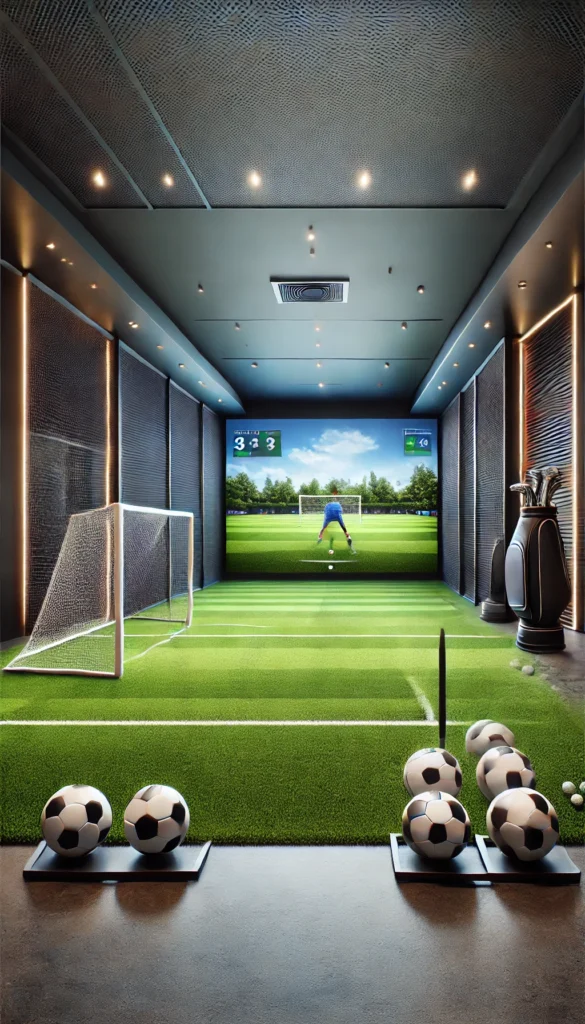
Designing an Immersive Simulation Football Training Room
An immersive simulation football training room combines physical space with advanced technology to create a comprehensive training environment. This setup can include augmented reality, projection mapping, and other digital enhancements.
Essential Components:
- High-Quality Projectors: Ensure clear and vibrant projections.
- Interactive Walls and Floors: Use projection mapping to turn walls and floors into interactive training surfaces.
- Motion Tracking Systems: Accurate tracking of player movements for real-time feedback.
- Sound Systems: Enhance immersion with realistic audio effects.
Design Tips:
- Space Planning: Ensure ample space for movement and interaction.
- Lighting Control: Optimize lighting to enhance the visibility of projections.
- Durable Materials: Use materials that can withstand physical activity.
By carefully designing the training room, you can create an environment that maximizes the benefits of AR and projection mapping technologies.
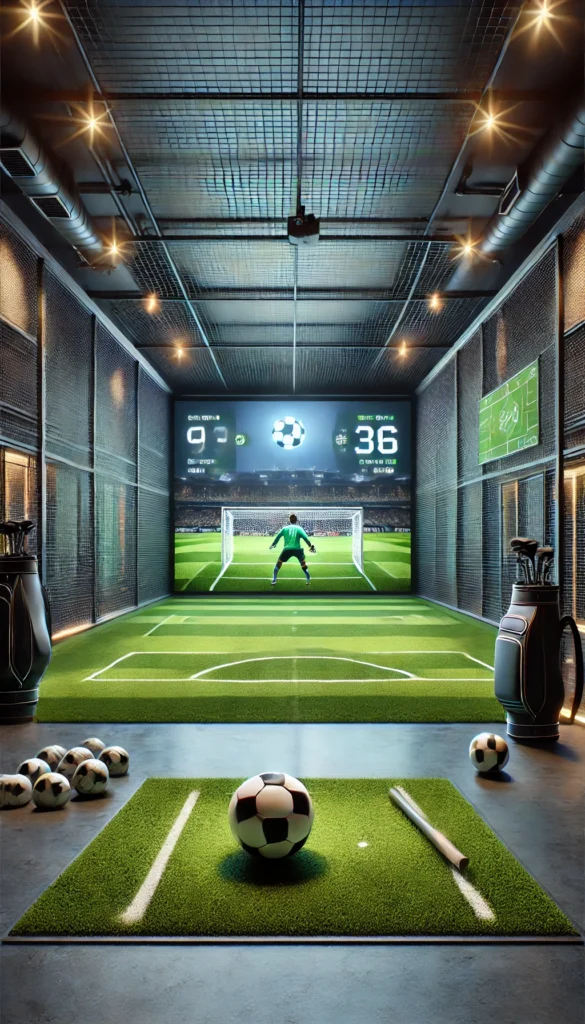
Setting Up an Indoor Play Football Goal Scoring Experience
Setting up an indoor play football goal scoring experience involves choosing the right equipment, software, and suppliers. This section will guide you through the key considerations for a successful setup.
Equipment Selection:
- Projectors: Choose projectors with high resolution and brightness.
- Motion Sensors: Ensure accurate and responsive tracking.
- Interactive Software: Select software that offers a range of training drills and customization options.
Recommended Suppliers:
- Epson: Known for high-quality projectors.
- OptiTrack: Provides advanced motion tracking systems.
- Beyond Sports: Specializes in interactive sports training software.
Implementation Steps:
- Assess the Space: Measure the area and plan the layout.
- Install Equipment: Set up projectors, sensors, and interactive surfaces.
- Configure Software: Install and configure the training software.
- Test the System: Run initial tests to ensure everything works correctly.
By following these steps, you can create an effective and engaging indoor football training setup.
The Benefits of an Indoor AR Football Simulation Game
The benefits of an indoor AR football simulation game go beyond just fun and engagement. This technology offers practical advantages for players of all levels.
Key Benefits:
- Year-Round Training: Train indoors regardless of weather conditions.
- Enhanced Performance: Target specific skills with interactive drills.
- Data-Driven Insights: Use performance data to track progress and adjust training.
Real-World Applications:
- Youth Training: Engage young players with fun and interactive drills.
- Professional Development: Provide advanced training for professional athletes.
- Rehabilitation: Use controlled environments for injury rehabilitation and recovery.
These benefits make AR football simulation games a valuable addition to any training program.
The price of the system can vary depending on the size, features, and brand. However, expect a significant upfront investment.
Several companies specialize in developing and supplying AR training solutions. Research reputable suppliers and compare their offerings before making a purchase.
Selecting the “best” system depends on your specific needs and budget. Consider factors like features, scalability, and compatibility before making a decision.

